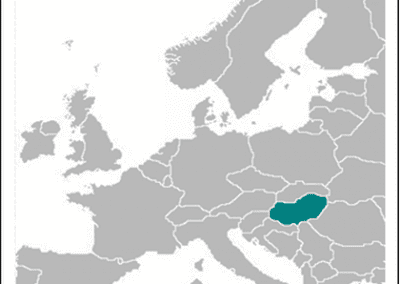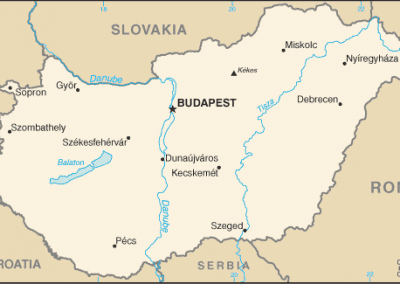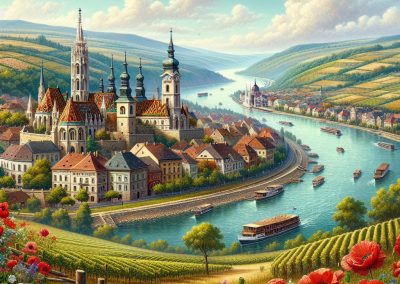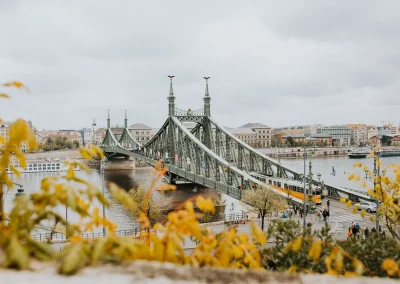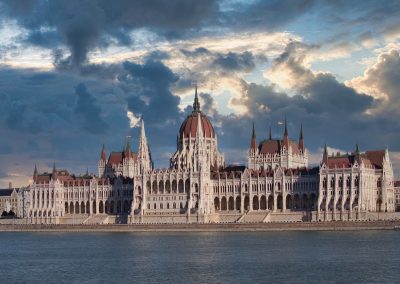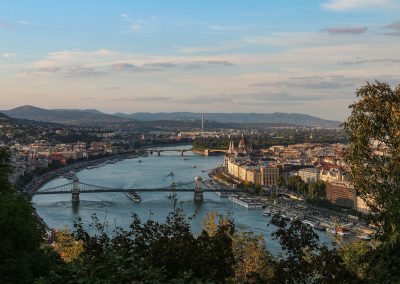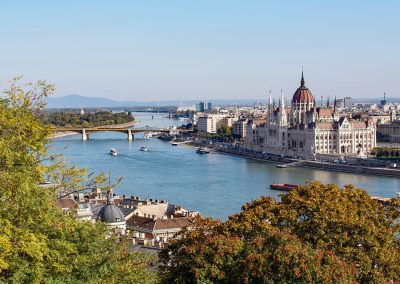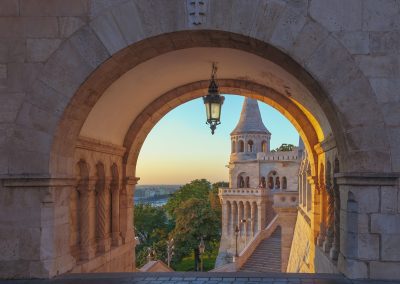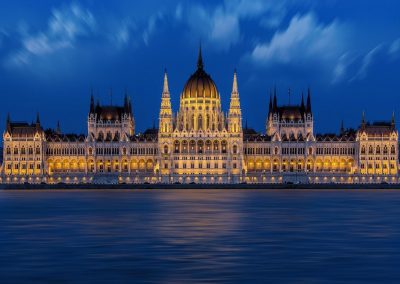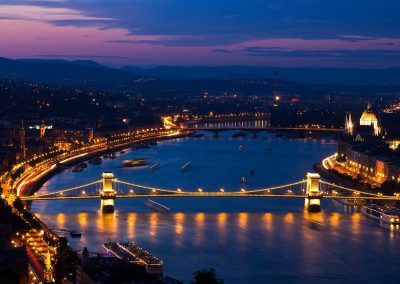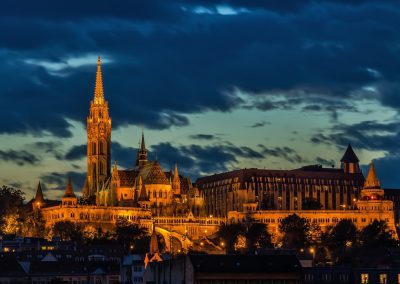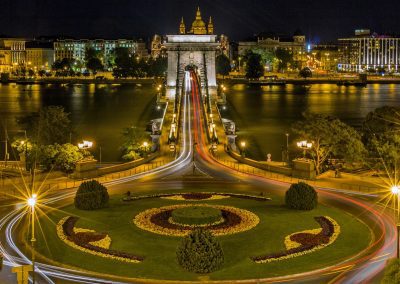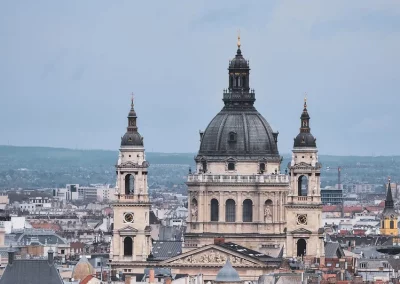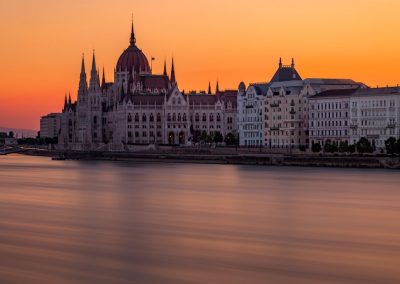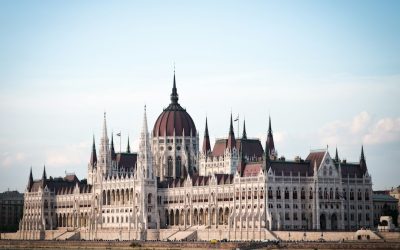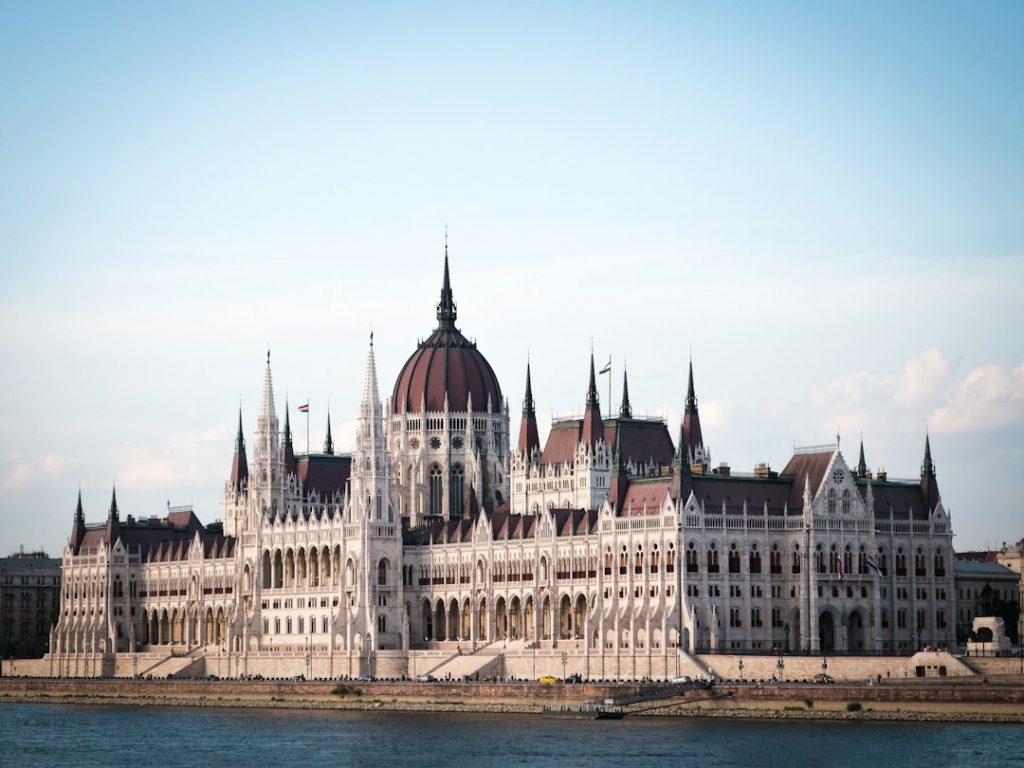Hungary
(Magyarország)

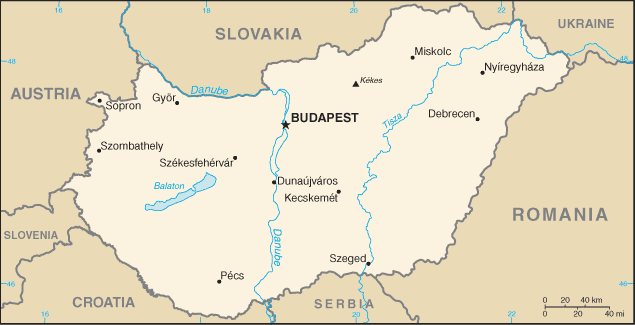
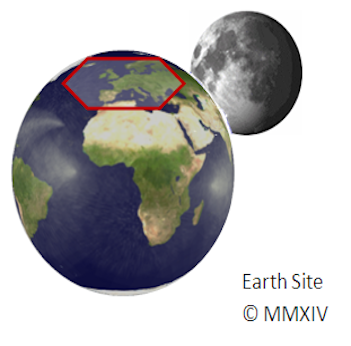
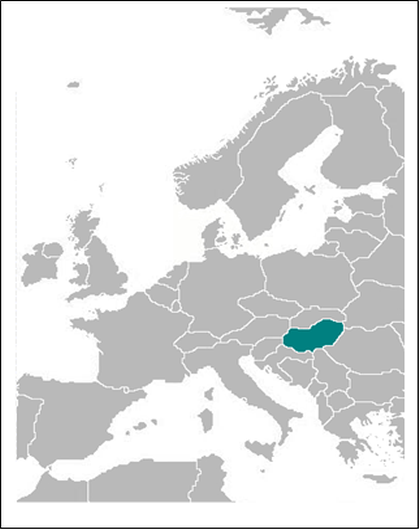
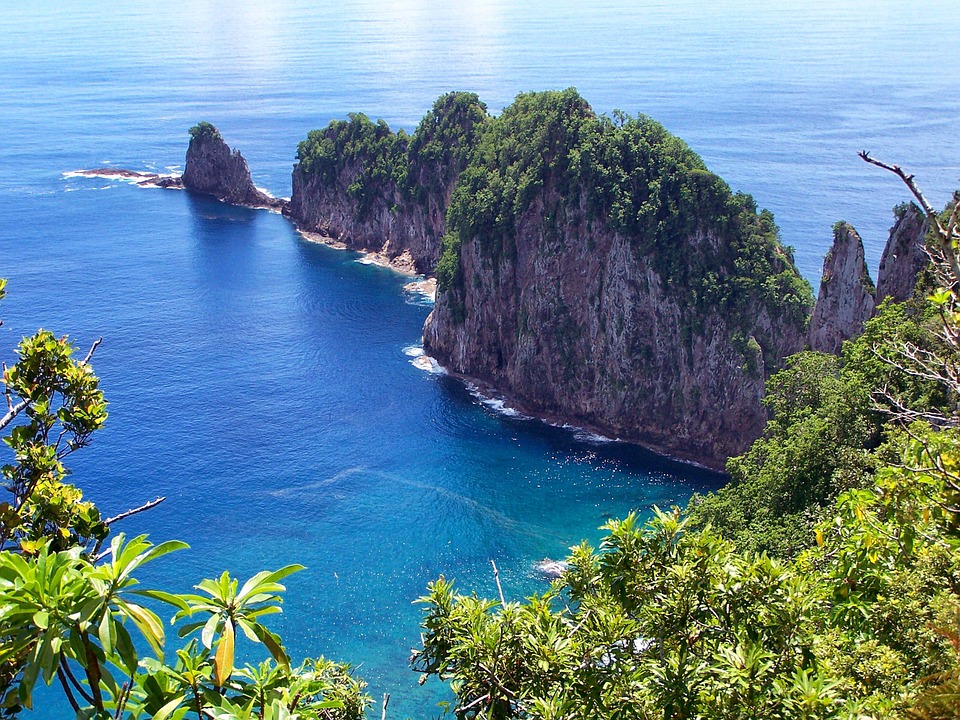

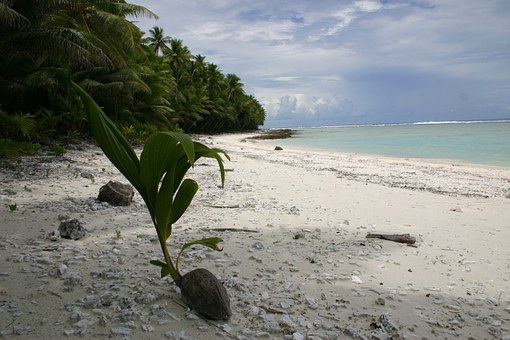
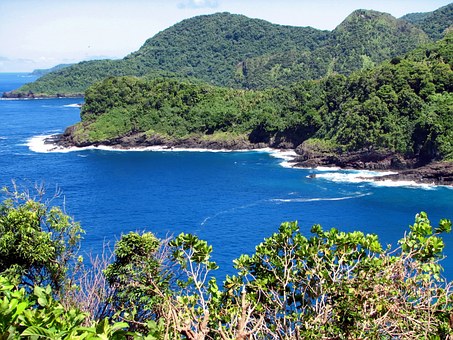
Capital: Budapest
Population (Estimated July 2012): 9,958,453
Area: 93,030 km2 or 35,919 mi2
Currency: Forint (Ft)
Official Language: Hungarian
Political Information: Parliamentary Republic
Official Religion: No Official Religion (approximately 51.9% of the population are Roman Catholic, 15.9% are Calvinist, 6.6% have other Christian beliefs and 25.6% have other or no religious beliefs)
Highest Mountain: Kékes at 1,014m or 3,327ft
GDP Official Exchange Rate (OER is more precise at gauging a countries economic power)
(Estimated 2011): $133.1 billion (US$) or (GBP)
GDP (OER) Per Capita (per member of the population estimated 2011): (US$) or (GBP)
GDP Purchasing Power Parity (PPP is good for gauging living conditions and use of resources but not as accurate as OER. This data has been calculated based on the sum value of all goods and services produced in the country valued at prices prevailing in the United States)
(Estimated 2011): $195.3 billion (US$) or (GBP)
GDP (PPP) Per Capita (per member of the population estimated 2011): $19,600 (US$) or (GBP)
Time Zone (GMT/UTC): +1:00
Wildlife:
Counties/Provinces/States: 19 counties (megyek, singular – megye), 23 urban counties (singular – megyei varos), and 1 capital city (fovaros)
Counties: Bacs-Kiskun, Baranya, Bekes, Borsod-Abauj-Zemplen, Csongrad, Fejer, Gyor-Moson-Sopron, Hajdu-Bihar, Heves, Jasz-Nagykun-Szolnok, Komarom-Esztergom, Nograd, Pest, Somogy, Szabolcs-Szatmar-Bereg, Tolna, Vas, Veszprem, Zala
Urban counties: Bekescsaba, Debrecen, Dunaujvaros, Eger, Erd, Gyor, Hodmezovasarhely, Kaposvar, Kecskemet, Miskolc, Nagykanizsa, Nyiregyhaza, Pecs, Salgotarjan, Sopron, Szeged, Szekesfehervar, Szekszard, Szolnok, Szombathely, Tatabanya, Veszprem, Zalaegerszeg
Capital city: Budapest
Leaders: President Pál Schmitt with Prime Minister Viktor Orbán.
Additional: The capital city of Budapest is made up of two areas divided by a river known as Buda and Pest.
Sources: CIA World Fact Book, Encyclopaedia Britannica.
Hungary
Hungary, a landlocked country in Central Europe, is known for its rich history, stunning architecture, and vibrant culture. With a population of over 9 million people, Hungary is a diverse and dynamic country that has played a significant role in European history. The capital city, Budapest, is a bustling metropolis that is home to some of the most beautiful buildings and landmarks in Europe. From the historic Buda Castle to the iconic Chain Bridge, Hungary is a country that is steeped in history and tradition. With its unique blend of Eastern and Western influences, Hungary is a country that offers visitors a truly unforgettable experience.
History and Culture of Hungary
Hungary has a long and storied history that dates back to ancient times. The country was once part of the Roman Empire and later became a powerful kingdom under the rule of the Árpád dynasty. Over the centuries, Hungary has been influenced by various cultures and civilizations, including the Ottoman Empire and the Habsburg Monarchy. This rich and diverse history is reflected in Hungary’s culture, which is a unique blend of traditions, customs, and beliefs. From folk music and dance to traditional festivals and celebrations, Hungary’s culture is a vibrant tapestry that continues to thrive in the modern world.
Hungary is also known for its contributions to the arts and sciences. The country has produced some of the world’s most renowned composers, including Franz Liszt and Béla Bartók, as well as Nobel Prize-winning scientists and writers. Hungarian literature and poetry have also made a significant impact on the world stage, with authors such as Sándor Márai and Imre Kertész gaining international acclaim. Overall, Hungary’s history and culture are an integral part of what makes the country so unique and fascinating.
Geography and Climate of Hungary
Hungary is located in the heart of Central Europe and is bordered by Austria, Slovakia, Ukraine, Romania, Serbia, Croatia, and Slovenia. The country’s landscape is diverse, with rolling plains, lush forests, and picturesque lakes. The Danube River, which flows through the heart of Hungary, is one of the most important waterways in Europe and has played a crucial role in the country’s history and development.
The climate in Hungary is continental, with hot summers and cold winters. The country experiences four distinct seasons, with warm temperatures in the summer months and cold temperatures in the winter. The diverse geography and climate of Hungary make it an ideal destination for outdoor enthusiasts, with plenty of opportunities for hiking, cycling, and water sports.
Economy and Industry of Hungary
Hungary has a diverse and thriving economy that is driven by industry, agriculture, and tourism. The country is known for its strong manufacturing sector, with industries such as automotive production, electronics, and pharmaceuticals playing a significant role in the economy. Hungary is also a major agricultural producer, with crops such as wheat, corn, and sunflower seeds being grown across the country.
Tourism is also an important part of Hungary’s economy, with millions of visitors flocking to the country each year to explore its historic cities, stunning landscapes, and vibrant culture. The government has made significant investments in infrastructure and promotion to attract more tourists to Hungary, which has helped to boost the country’s economy.
Overall, Hungary’s economy is strong and continues to grow, making it an attractive destination for investors and businesses looking to expand into Central Europe.
Hungarian Cuisine and Traditions
Hungarian cuisine is known for its rich flavours and hearty dishes that are influenced by both Eastern and Western European culinary traditions. Some of the most popular Hungarian dishes include goulash, a hearty stew made with beef, onions, and paprika; lángos, a deep-fried flatbread topped with sour cream and cheese; and dobos torte, a decadent layered cake that is a favourite dessert in Hungary.
In addition to its delicious food, Hungary is also known for its unique traditions and customs. From traditional folk music and dance to colourful festivals and celebrations, Hungarian culture is vibrant and diverse. One of the most famous traditions in Hungary is the Busó Festival, which takes place in the town of Mohács and features elaborate costumes, parades, and music to scare away winter.
Overall, Hungarian cuisine and traditions are an integral part of the country’s culture and identity, making it a truly unique destination for food lovers and cultural enthusiasts alike.
Tourism in Hungary
Hungary is a popular tourist destination that offers visitors a wide range of attractions and activities to enjoy. From the historic streets of Budapest to the stunning landscapes of Lake Balaton, there is something for everyone to explore in Hungary. The country is home to numerous UNESCO World Heritage Sites, including the Buda Castle Quarter and the Hortobágy National Park, which showcase Hungary’s rich history and natural beauty.
In addition to its historic landmarks and natural wonders, Hungary also offers visitors a vibrant cultural scene with numerous museums, galleries, and theatres to explore. The country’s thermal baths are also a major draw for tourists, with famous spas such as Széchenyi Thermal Bath offering visitors a chance to relax and unwind in luxurious surroundings.
Overall, Hungary’s diverse attractions and activities make it an ideal destination for travellers looking to experience the best of Central Europe.
Current Events and Future Prospects in Hungary
In recent years, Hungary has faced some political challenges that have sparked debate both domestically and internationally. The government’s approach to immigration policy and media freedom has been a source of controversy, leading to tensions with other European Union member states. However, despite these challenges, Hungary continues to thrive economically and remains an attractive destination for investors and businesses looking to expand into Central Europe.
Looking ahead, Hungary’s future prospects are bright. The government has made significant investments in infrastructure and innovation to drive economic growth and create new opportunities for businesses and entrepreneurs. The country’s tourism industry also continues to grow, with more visitors flocking to Hungary each year to explore its historic cities, stunning landscapes, and vibrant culture.
Overall, Hungary remains a dynamic and diverse country that offers visitors a truly unforgettable experience. With its rich history, stunning architecture, vibrant culture, and thriving economy, Hungary is a destination that continues to captivate travellers from around the world.
FAQs
What is the capital of Hungary?
The capital of Hungary is Budapest.
What is the official language of Hungary?
The official language of Hungary is Hungarian.
What is the currency used in Hungary?
The currency used in Hungary is the Hungarian Forint (HUF).
What are some popular tourist attractions in Hungary?
Some popular tourist attractions in Hungary include the Buda Castle, Fisherman’s Bastion, Hungarian Parliament Building, and the thermal baths in Budapest.
What is the climate like in Hungary?
Hungary has a temperate continental climate, with hot summers and cold winters.
What are some traditional Hungarian dishes?
Some traditional Hungarian dishes include goulash, lángos (fried dough), and chimney cake (kürtőskalács).
What are some famous Hungarian inventions?
Some famous Hungarian inventions include the Rubik’s Cube, ballpoint pen, and holography.
What are some major industries in Hungary?
Some major industries in Hungary include automotive manufacturing, electronics, pharmaceuticals, and agriculture.
History of Hungary
Hungary has a rich and diverse history that dates back to ancient times. The area that is now Hungary was first settled by various tribes, including the Celts, Romans, and Huns. In the 9th century, the Magyars, a nomadic people from the Ural Mountains, migrated to the Carpathian Basin and established the Kingdom of Hungary. Under the leadership of Prince Árpád, the Magyars conquered the local Slavic and Avar tribes and established a powerful kingdom in the heart of Europe. The Kingdom of Hungary flourished under the rule of King Stephen I, who was crowned the first Christian king in 1000 AD. He established a strong central government, introduced Christianity to the region, and laid the foundations for a prosperous medieval kingdom. The Kingdom of Hungary expanded its territory through conquests and alliances, becoming one of the most powerful states in Europe. The Hungarian nobility played a crucial role in the governance of the kingdom, and the country developed a unique political system based on a feudal hierarchy. Summary Early settlements in Hungary date back to the 9th century, with the Magyars establishing a kingdom in the Carpathian Basin. The Kingdom of Hungary reached its peak under the rule of King Matthias Corvinus in the 15th century, becoming a major European power. Ottoman rule in Hungary lasted for over 150 years, followed by the Habsburg Monarchy’s control over the region. The Hungarian Revolution of 1848 led to the establishment of the Austro-Hungarian Empire, a dual monarchy with Austria. World War I and the Treaty of Trianon in 1920 resulted in the loss of two-thirds of Hungary’s territory and population....
Population Density of Hungary
Population density refers to the number of people living in a specific area, usually measured in square kilometres or square miles. It is an important demographic indicator that provides insights into the distribution of people within a given region. Understanding population density is crucial for urban planning, resource allocation, and environmental management. In the case of Hungary, population density plays a significant role in shaping the country’s social, economic, and political landscape. With a total land area of 93,030 square kilometres and a population of approximately 9.7 million people, Hungary has a population density of 106 people per square kilometre. This places Hungary in the middle range of population density when compared to other European countries. However, within Hungary, there are significant variations in population density, with some regions being densely populated while others are sparsely populated. This article will explore the factors affecting population density in Hungary, the urban versus rural population distribution, historical trends in population density, the impact of population density on infrastructure and resources, future projections for population density, and conclude with the implications of these trends. Summary Population density refers to the number of people living in a specific area, usually measured in square kilometres or square miles. Factors affecting population density in Hungary include economic opportunities, government policies, and natural resources. Urban areas in Hungary have higher population density compared to rural areas, due to better job opportunities and access to amenities. Historical trends in population density in Hungary show a shift from rural to urban areas, driven by industrialization and urbanization. High population density in urban areas puts pressure on infrastructure and...
Terrain and Topography of Hungary: mountains, valleys, and plains.
Hungary, located in Central Europe, is a landlocked country known for its diverse and beautiful landscapes. The terrain of Hungary is characterized by its flat plains, rolling hills, and mountainous regions. The country’s topography is a result of its geological history, with the Great Hungarian Plain dominating the eastern part of the country, while the western part is home to the Transdanubian Mountains and the Balaton Uplands. In the north, the country is bordered by the Northern Hungarian Mountains, which add to the varied topography of Hungary. The Danube River, one of the longest rivers in Europe, flows through the heart of the country, shaping its valleys and providing a lifeline for the diverse ecosystems that thrive in Hungary. This article will explore the different regions of Hungary, highlighting their unique features and contributions to the country’s rich natural beauty. Summary Hungary’s terrain is diverse, with flat plains, rolling hills, and mountainous regions. The Great Hungarian Plain covers over half of the country and is known for its fertile soil and agricultural significance. The Transdanubian Mountains are located in the western part of Hungary and offer stunning landscapes and outdoor recreational opportunities. The Northern Hungarian Mountains, including the Mátra and Bükk ranges, are popular for hiking, skiing, and nature exploration. The Danube River and its valleys are a defining feature of Hungary’s landscape, providing fertile land and picturesque scenery for visitors and locals alike. The Balaton Uplands, surrounding the largest lake in Central Europe, offer a unique blend of volcanic hills, vineyards, and historic towns. Hungary’s diverse landscapes make it a fascinating destination for nature lovers and outdoor enthusiasts....
Climate Zones of Hungary: Different climate regions Of Hungary
Hungary is a landlocked country in Central Europe, and its climate is influenced by its geographical location and topography. The country is divided into several distinct climate zones, each with its own unique characteristics and influences on the environment and agriculture. These climate zones include the Continental Climate of the Great Plain, the Sub-Mediterranean Climate of Transdanubia, the Alpine Climate of the Northern Uplands, the Oceanic Climate of the Western Border, and the Steppe Climate of the Southern Plains. Each of these climate zones plays a crucial role in shaping Hungary’s natural landscape and agricultural practices, making it a fascinating subject to explore. Summary Hungary has a diverse range of climate zones, each with its own unique characteristics and influences. The Great Plain region experiences a continental climate, with hot summers and cold winters, making it suitable for growing cereals and sunflowers. Transdanubia has a sub-Mediterranean climate, with mild winters and hot summers, ideal for vineyards and fruit orchards. The Northern Uplands have an alpine climate, with cold winters and cool summers, creating suitable conditions for forestry and winter sports. The Western Border region has an oceanic climate, with mild winters and cool summers, providing ideal conditions for growing grapes and producing wine. The Continental Climate of the Great Plain The Great Plain, also known as the Puszta, is located in the southeastern part of Hungary and is characterized by a continental climate. This means that the region experiences hot summers and cold winters, with a large temperature difference between the two seasons. The summers are typically dry and hot, with temperatures often reaching 30°C or higher, while the...
Political Boundaries of Hungary: Provinces, Districts, or Historical Boundaries.
Hungary, a landlocked country in Central Europe, is bordered by Austria, Slovakia, Ukraine, Romania, Serbia, Croatia, and Slovenia. The country’s political boundaries have evolved over centuries, shaped by historical events, wars, and treaties. Today, Hungary is divided into 19 counties and the capital city of Budapest, each with its own local government. These political boundaries play a crucial role in the administration and governance of the country, as well as in shaping the social and economic landscape of Hungary. The political boundaries of Hungary are not only defined by its external borders but also by its internal administrative divisions. These divisions are essential for the effective functioning of the country’s government and the delivery of public services to its citizens. Understanding Hungary’s political boundaries is crucial for comprehending the country’s governance structure and the distribution of power and resources within its territory. In this article, we will explore the various aspects of Hungary’s political boundaries, including its provinces, districts, historical significance, challenges, and impact on society and the economy. We will also discuss the future prospects for Hungary’s political boundaries in the context of changing geopolitical dynamics and domestic politics. Summary Hungary’s political boundaries have evolved over centuries and have been influenced by various historical, cultural, and geopolitical factors. Hungary is divided into 19 counties, each with its own local government and administrative functions, making up the country’s provinces. Districts play a crucial role in Hungary’s political boundaries, serving as administrative units for local governance and public services. Historical boundaries, such as the Treaty of Trianon, continue to have a significant impact on modern Hungary, shaping its geopolitical landscape...
Natural Resources of Hungary: Where Natural Resources are located In Hungary
Hungary, a landlocked country in Central Europe, is blessed with a diverse range of natural resources that have played a significant role in shaping its economy and culture. From fertile agricultural lands to rich mineral deposits, Hungary’s natural resources have been crucial in sustaining its population and driving economic growth. The country’s strategic location and varied topography have also contributed to the abundance of water resources, forests, and wildlife. Additionally, Hungary’s energy resources, including both traditional and renewable sources, have been instrumental in meeting the nation’s energy needs. This article will explore the various natural resources that Hungary possesses and their impact on the country’s development and sustainability. Summary Hungary is rich in natural resources, including agricultural, mineral, water, forest, energy, and wildlife resources. The country’s agricultural resources are diverse, with a focus on wheat, corn, sunflower seeds, and potatoes. Hungary has significant mineral resources, including bauxite, coal, natural gas, and uranium. Water resources in Hungary are abundant, with the country being home to the largest lake in Central Europe, Lake Balaton. Forest resources in Hungary cover over 20% of the country’s land area and are an important source of timber and wildlife habitat. Hungary’s energy resources include natural gas, coal, and renewable energy sources such as solar and wind power. The country is home to a diverse range of wildlife and has several national parks and protected areas to preserve its biodiversity. Agricultural Resources in Hungary Hungary’s agricultural resources are a cornerstone of its economy, with the country being known for its fertile plains and favourable climate for crop cultivation. The Great Hungarian Plain, also known as the...
Cultural or Historical Sites of Hungary: Important Cultural Landmarks or Historical Sites In Hungary
Hungary is a country rich in cultural and historical heritage, with a plethora of sites that showcase its fascinating past. From medieval castles to stunning palaces, and from picturesque national parks to renowned wine regions, Hungary offers a diverse range of attractions for history enthusiasts and nature lovers alike. The country’s strategic location in the heart of Europe has made it a melting pot of different cultures and influences, resulting in a unique blend of architectural styles, traditions, and customs. Whether you’re exploring the bustling streets of Budapest or venturing into the tranquil countryside, Hungary’s cultural and historical sites are sure to leave a lasting impression on visitors. Hungary’s history dates back to ancient times, with evidence of human settlement dating back to the Paleolithic era. Over the centuries, the country has been shaped by various rulers and empires, including the Romans, the Huns, the Magyars, and the Ottoman Empire. This rich tapestry of influences is reflected in Hungary’s diverse cultural landscape, with a mix of Romanesque, Gothic, Baroque, and Ottoman architecture. The country’s historical sites offer a glimpse into its tumultuous past, from the medieval fortresses that once guarded its borders to the grand palaces that served as seats of power. Whether you’re interested in exploring ancient ruins or admiring opulent royal residences, Hungary’s cultural and historical sites provide a captivating journey through time. Summary Hungary is home to a rich tapestry of cultural and historical sites, each with its own unique story to tell. The Buda Castle in Budapest is a stunning example of Hungarian architecture and offers breathtaking views of the city. The Hungarian Parliament Building...
Discovering the Hidden Gems of Hungary: A Journey Through the Heart of Europe
Hungary, located in Central Europe, is a hidden gem waiting to be discovered by travelers. With its rich history, vibrant culture, delicious cuisine, and stunning natural landscapes, Hungary offers a diverse range of experiences for visitors. From the bustling capital city of Budapest to the lesser-known regions and countryside retreats, there is something for everyone in this captivating country. Some of the popular tourist attractions in Hungary include the iconic Chain Bridge in Budapest, the historic Buda Castle, the thermal baths of Széchenyi and Gellért, and the picturesque Danube River. These attractions showcase the unique blend of architectural styles and cultural influences that Hungary has to offer. However, there is much more to explore beyond these well-known sites. Summary Hungary has many lesser-known regions that are worth exploring, such as the Tokaj wine region and the Northern Uplands. The country has a rich cultural heritage, with influences from the Ottoman Empire, Habsburg monarchy, and more. Hungarian cuisine is delicious and diverse, with dishes like goulash, chimney cake, and langos. Natural wonders in Hungary include Lake Balaton, the Danube Bend, and the Aggtelek National Park. Getting off the beaten path in Hungary can lead to hidden gems like the village of Hollókő and the abandoned village of Györgyfalva. Exploring the Lesser-Known Regions of Hungary While Budapest may steal the spotlight, there are several lesser-known regions in Hungary that are worth exploring. These regions offer a more authentic and off-the-beaten-path experience for travelers. One such region is the Tokaj wine region, known for its world-renowned sweet wines. Visitors can explore vineyards, taste different varieties of wine, and learn about the winemaking...
